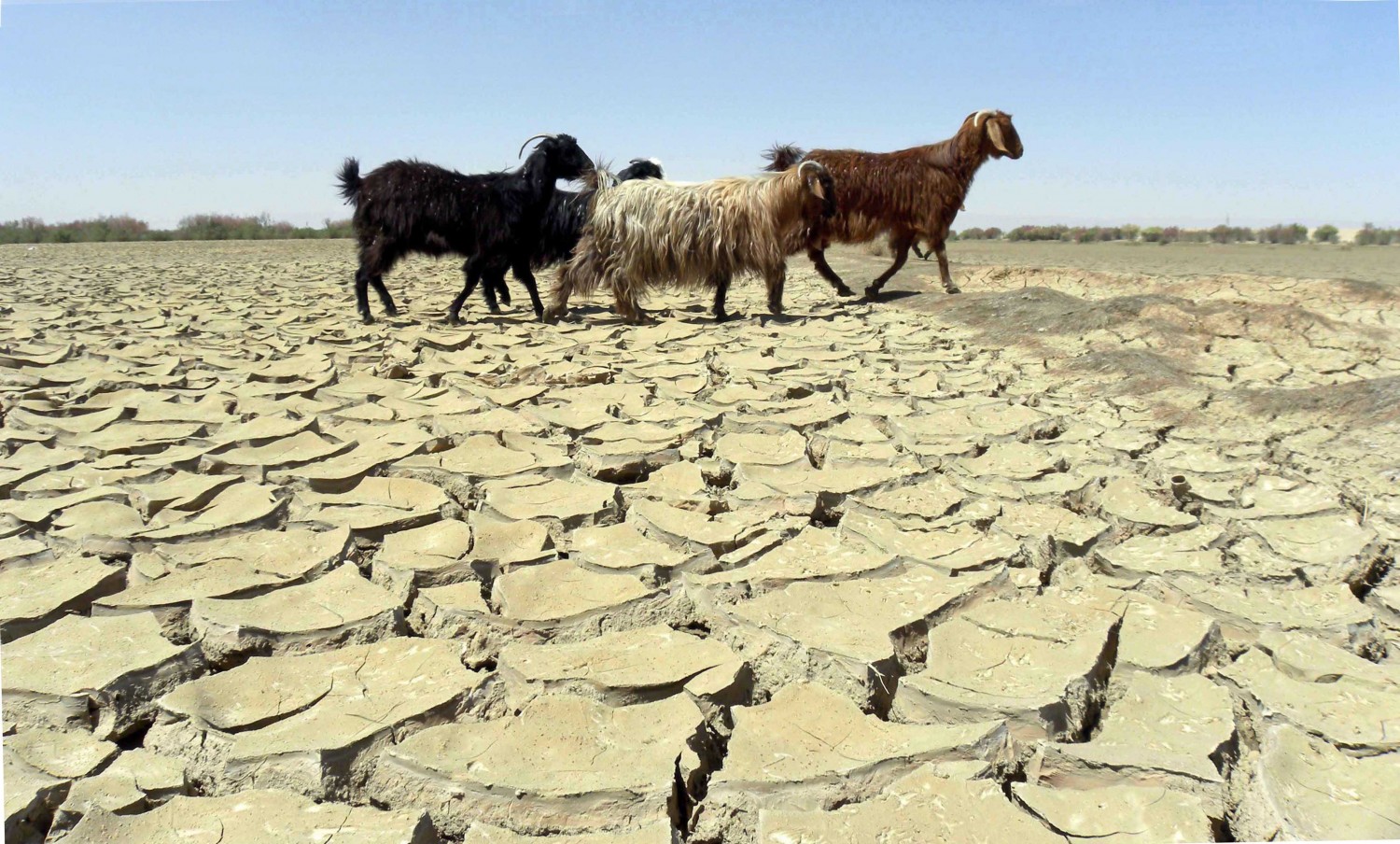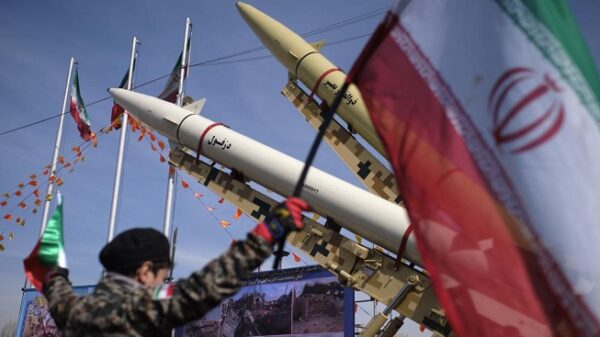Corruption, political influence and mismanagement are causing water shortages in the tail areas of Sindh and devastating agriculture
A few months ago the paddy crop of Mir Noor Talpur of Badin was close to drying up because of water shortage and later after heavy rains 30% of his cotton crop has been damaged. The torrential rains created havoc in Badin and adjoining areas and he expects just a few acres of his paddy crop would survive.
According to Muhammad Siddique Rodnani, a grower of Johi, his paddy crop had dried up before the rains. Now the flood from Nai Gaj in the Kacho area and rainwater has damaged road infrastructure to the south of Johi.
Water shortage in Sindh is a reality, especially in the tail areas of many districts, which has made millions of acres of irrigated land barren in the past 20 years. Corruption, political influence, and mismanagement are the real causes of the water shortage on both sides of the Indus River, which is damaging agriculture.
This is evident from the statements of local growers, representatives of associations, and politicians of the affected areas who blame the Irrigation Department for the problem. Due to this situation, thousands of people from various areas had to leave their lands and ancestral villages and move to irrigated areas in search of livelihood. The most affected districts are Mirpurkhas, Badin, Thatta, and Taluka Johi of District Dadu.
This situation has forced most tail area growers to not only migrate for survival but also switch professions.
Mr. Nawab Yousuf Talpur is a grower, an MNA from the ruling party of Sindh, Pakistan Peoples Party, and Chairman of the National Assembly’s Standing Committee on Water Resources. When he was contacted to know the causes of water shortages in the tail areas, he revealed two major reasons.
The senior parliamentarian said the first reason was the nonexistence of proper regulation of water from Tarbela Dam to tail barrages of Sindh, whereas the second was mismanagement by the local Irrigation Department.
Citing an example, he said due to better management there was no water issue in District Umerkot and Hyderabad. On the other hand, Badin, Thatta, Mirpurkhas, and Taluka Johi are suffering badly due to mismanagement of the Irrigation Department.
Mr. Talpur claimed that overall Sindh and Balochistan were not facing issues due to water distribution by Indus River System Authority (IRSA). He suggested that the water shortage issue could be resolved if the provincial governments worked on better irrigation management.
Information Secretary of Sindh Abadgar Board Mr. Muhammad Aslam Mari claimed that water theft and silting up of canals were the main reasons for water shortages. He said, on the one hand, the influential class was taking extra water by force or by bribing the irrigation officials, while on the other hand the irrigation officials did not release due water share in the canals or showed wrong gauges to save the watercourses from breaches as most canals were unable to take water till the tail due to silting.
The chief patron of Sindh Abadgar Association Sukkur Barrage Mr. Fayaz Shah Rashdi and Mir Noor Muhammad Talpur asserted that most parliamentarians in the area were drawing extra water through direct outlets and illegal flood canals. To benefit the upper area landowners, the Tiyoon Mail (Third Mail) Imam Wah and Alipur regulators of the Phuleli Canal were chocked. They also claimed that the water capacity of Goni Wah was increased from 6,000 to 18,000 cusecs to benefit powerful landlords of the Gollarchi area.
They claimed there were two ways of getting water from Phuleli, Goni, Akram, and Sultan Wahs. The first option is to pay Rs 700,000 to Rs 800,000 as a bribe to irrigation officials, whereas the second option revolves around having a strong political background or political support.
They disclosed that the water of Akram Wah of Kotri Barrage had been diverted to the Sukkur Barrage command area to irrigate the lands of the influential people. For this purpose, new regulators of 400 to 500 cusecs have been installed in different places. This has reduced the irrigated area of Akram Wah from 700 acres to merely 100 acres.

This situation has forced most tail area growers to not only migrate for survival but also switch professions.
Mr. Hanif Samoon, a journalist from Badin, revealed that 300,000 to 400,000 acres of rice crop of Pangriyo, Sahdi large, Khoski, Kadhan, Nando city, Serani, and Ahmed Rajo has been severely affected due to water theft and illegal water distribution.
Mr. Mir Noor Talpur also disclosed that hundreds of acres of Naser Canal of Subdivision Khairpur Gambo became barren due to low gauges and only half of the water supply. He also said he owned 320 acres of land on the watercourse of a 640-acre water command area but it can hardly cultivate 38 acres.
Irrigation water availability on the left side of River Indus including Sukkur and Khairpur Mirs, Naushahro Feroze, Nawabshah (Shaheed Benazir Abad), and Sakrand is comparatively better since they are on the upper side.
The water situation on the right side of the Indus River is not different from the tail areas on the left side. Some areas of Larkana and Mehar are facing water shortage issues because of theft and mismanagement. The tail area of Johi branch is the most affected and many people have migrated to other places.
Following protests against water shortages by growers of Johi branch, Irrigation Minister Mr. Suhail Anwar Siyal visited the area without informing local growers. He ordered Deputy Commissioner Dadu to close all the illegal direct outlets and pipelines and soon the local administration started an operation to this effect.
Mr. Manzoor Chandio, a grower of Bego Dero minor of Johi branch, said Bego Dero minor consisted of 80 reduced distance (RD) signs. Local influentials have created illegal water courses till RD 60 from where water is taken without any measurement. He further revealed that growers from RD 80 down to RD 60, especially RD 70 and 80, cultivated paddy in large quantities which left not a single drop of water for drinking.
Vice-Chairman of Sindh Abadgar Board Dadu, Haji Muhammad Umer Jamali said command area of the Johi branch was about 150,000 acres of which 50,000 acres were located in Khairpur Nathan Shah. The influentials are utilizing the maximum share of poor growers of Johi because a majority of them live in Khairpur Nathan Shah.
He said the government and opposition parliamentarians belonging to the Leghari, Butt, and Jatoi families were using Johi branch water to cultivate paddy although cultivation of the crop is banned in the area. There is a dire need to desilt Johi branch from head till Nine Mile, stop the cultivation of paddy in the banned area, and take swift action against illegal direct outlets and pipelines.
When IRSA spokesperson Khalid Idrees Rana was asked to comment on the situation, he casually denied the issue. According to him, the department released about 215,000 cusecs downstream Chasma Barrage for Sindh whereas the requirement was only 175,000 cusecs. During the current Kharif season that began on April 1, 3.357 million acre-feet of water escaped downstream Kotri.
This huge quantity of water flowing to the sea is proof that there is no shortage in the Indus system and the current situation is only mismanagement.
Also Read Gas Price Hike Brings To Fore The Punjab-Sindh Energy Cost Disparity
Article by: Qurban Baloch










